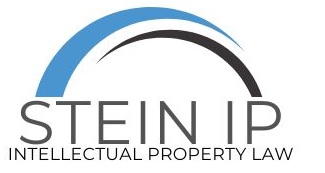- HOME
- > Blog Main Page
- > The USPTO Releases New Guidance on Generic.com Terms Following USPTO v. Booking.com
The USPTO Releases New Guidance on Generic.com Terms Following USPTO v. Booking.com
By Chris Kang
The USPTO published new guidelines on October 28, 2020 for analyzing the genericness of “generic.com” terms following the US Supreme Court’s precedential decision in USPTO v. Booking.com B.V.[1] On June 30, 2020, the Supreme Court ruled that “Booking.com” was not a generic term and was eligible for trademark registration, rejecting the per se rule that a generic term combined with a generic top-level domain, such as “.com” or “.org,” is generic.[2] However, the Supreme Court also declined to “embrace a rule automatically classifying [generic.com terms] as nongeneric.”[3]
Under the new guidance, the USPTO advises examining attorneys to continue addressing generic.com terms under the standard genericness framework, on a case-by-case basis.[4] If the examining attorney presents evidence showing that the relevant consumer would perceive the generic.com term as the name of a class as opposed to a distinguishable member of the class, then the term may be established generic.[5] A few examples that an examining attorney might look to include dictionary usage, industry standards, and the applicant’s own use of the generic.com term.[6]
The refusal process remains the same for a generic.com term, in which the examining attorney must not initially issue a refusal for registration on the Principal Register on a genericness basis, but on a distinctiveness basis along with an advisory on whether the mark may serve as a source indicator.[7] If the examining attorney finds that the term is capable of serving as a source indicator, then he or she may advise that the applicant may amend the application to the Supplemental Register.[8] Otherwise, the examining attorney must include an advisory recommending the applicant against making a claim of acquired distinctiveness or amendment to the Supplemental Register.[9] Contrarily, registration on the Supplemental Register for a generic.com term may be initially refused if the examining attorney finds sufficient evidence that the term is generic.[10] Moreover, a genericness refusal on either register is proper if the applicant has made a claim for acquired distinctiveness and there is strong evidence of genericness.[11]
An applicant seeking registration under a claim of acquired distinctiveness must provide sufficient evidence showing that the generic.com term has obtained secondary meaning in relation to the goods or services.[12] A generic.com term would unlikely be inherently distinctive given that it typically consists of descriptive terms, and thus the applicant must prove that the mark has acquired distinctiveness.[13] Furthermore, neither prior registration nor evidence of an applicant’s five years of exclusive and continuous would likely establish acquired distinctiveness on its own, and thus the applicant must present other evidence to show that the mark may serve as a source indicator.[14] Acceptable evidence for a generic.com term remains consistent with proof of distinctiveness for other trademarks or service marks and may include, inter alia, consumer surveys; consumer declarations; evidence, such as declarations or depositions, showing duration, extent, and nature of the proposed mark’s use in commerce; advertising expenditures; letters or statements from the trade or public.[15] When submitting consumer surveys, the guidance highlights the importance of ensuring that a survey is designed to accurately and reliably represent consumer perception of a proposed mark.[16]
Regarding generic.com terms combined with other matter, generic.com terms that are incapable of serving as a source indicator and can be separated from the other matter must be disclaimed consistent with the current disclaimer policy.[17]
Additionally, the examining attorney may refuse registration where the specimen of use for a generic.com term fails to serve as a source indicator for the named goods or services if the term is solely being used as a website address.[18]
While the Supreme Court has determined that generic.com terms are no longer automatically considered generic, potential marks for generic.com terms “may be subject to a narrower scope of trademark protection” when it consists of generic or descriptive components that may be used in other marks.[19] When examining proposed marks, examining attorneys must determine whether a prior registration for a generic.com term is differentiable from the proposed mark.[20] Each proposed mark must be considered on a case-by-case basis and must nonetheless show that the mark is neither generic nor descriptive pursuant to the Trademark Act.[21]
[1] United States Patent and Trademark Office, Examination Guide 3-20 (2020).
[2] United States Patent & Trademark Office v. Booking.com B. V., 140 S. Ct. 2298 (2020).
[3] Id. at 2307.
[4] United States Patent and Trademark Office, Examination Guide 3-20 (2020).
[5] Id.
[6] Id.
[7] Id.
[8] Id.
[9] Id.
[10] Id.
[11] Id.
[12] Id.
[13] Id.
[14] Id.; 37 CFR § 2.41(d).
[15] United States Patent and Trademark Office, Examination Guide 3-20 (2020).
[16] Id
[17] Id.
[18] Id.; TMEP § 1202.19(e).
[19] United States Patent and Trademark Office, Examination Guide 3-20 (2020).
[20] Id.
[21] Id.

TAGS:
RECENT POSTS
